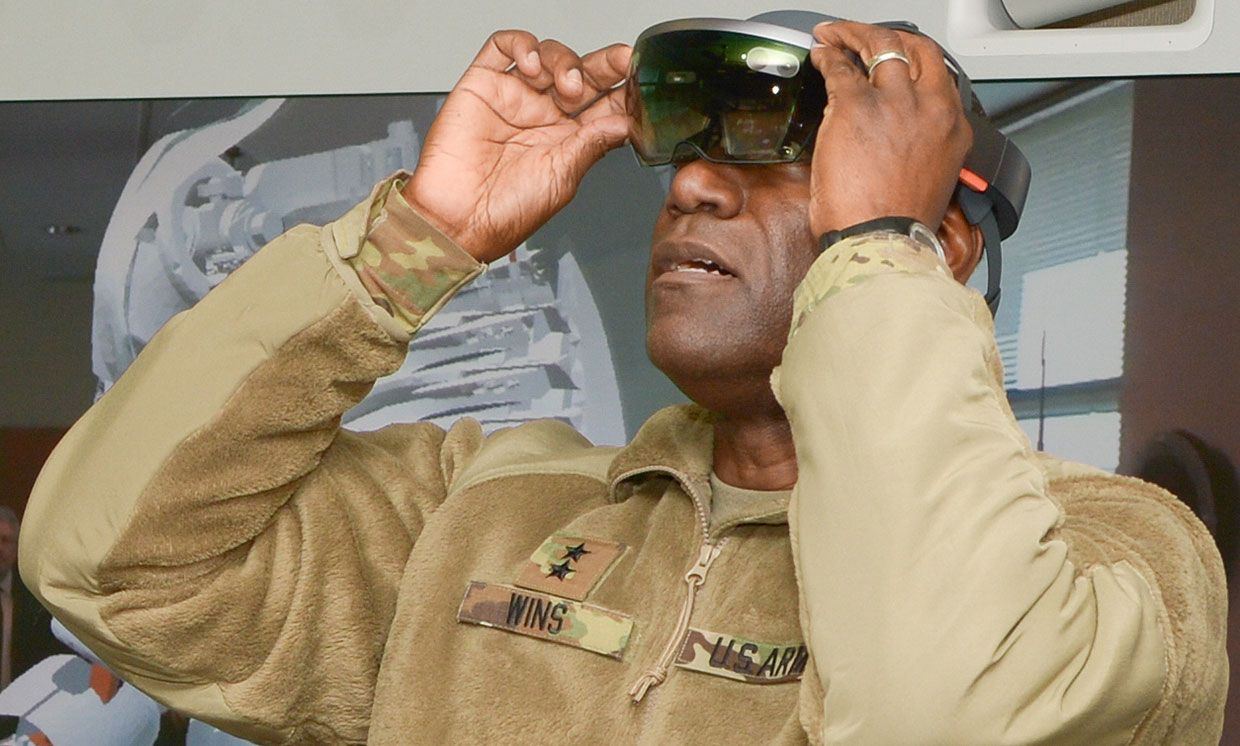How Will the U.S. Military Use the Hololens on the Front Line?
Adapting Microsoft's mixed-reality technology to meet soldiers' needs could be challenging, one expert says
In the near future, U.S. soldiers could be relying on Microsoft’s mixed-reality Hololens technology to give them the edge. Last week, Bloomberg News reported that Microsoft had won a US $480 million contract from the U.S. Army for prototypes of a system that could result in the Army ordering 100,000 headsets, potentially for use in active combat.
This is a significant departure from how Hololens technology has been previously considered for military use. In the United States, military projects incorporating mixed and virtual reality have stayed largely in line with the private sector’s original goal of creating systems for immersive entertainment or industrial use. So we’ve seen the Hololens used for training or demonstrated as an aide for field technicians servicing equipment. Even in other countries, where the technology is being considered for battlefield use, the scope has been narrow, such as a Ukrainian test of a Hololens-equipped helmet that gives tank commanders a 360-degree view of the world outside their tank.
But 100,000 headsets would mean that the U.S. Army would be issuing Hololens-based equipment to a broad number of soldiers (the Army has an active strength of about 476,000). Neither Microsoft nor the U.S. Army returned IEEE Spectrum’s requests for comment, so we asked David Krum, the associate director of MxR Lab at the University of Southern California’s Institute for Creative Technologies (ICT), about how the technology might be used more widely. ICT is a U.S. Department of Defense–sponsored research center that studies immersive technologies, but Krum is not involved with the latest Hololens initiative.
“One of the interesting things about the Hololens is that it does have a set of sensors on it, tracking your position within a space. With those sensors, it can be somewhat aware of what’s going on in the environment around you. If it can be aware of what’s going on around you…and provide some additional information about equipment you are working with, or a situation you are dealing with, that can be really helpful to soldiers,” says Krum. He points out there are limits to how much a soldier can be briefed in advance, so in a rapidly changing situation, “being able to access information right away and have it be contextualized, I think that’s seen as a way to give a 10x boost in efficiency and operational strength.”
Taking a commercial product intended for a mass market and making it suitable for front-line use will pose a number of challenges, Krum says. “In general, it’s always easy to say, ‘Hey, look at all that great [commercial] innovation, let’s pull that into the military,’ but some of the challenges are different, and some of the goals are different, so it doesn’t always come across.” Looking back over lessons learned from the previous two decades of the U.S. military’s efforts to develop wearable computers for soldiers, Krum says there are typical challenges in making consumer-grade items ready for the military’s field of operations, and these will likely occupy much of Microsoft’s efforts under the contract: “It needs to be dustproof, waterproof, shock resistant, scratch resistant. There will be bright sunlight and very dim light, and it needs to be able to operate [in both].”
In addition, Microsoft’s prior Hololens development has “been at the consumer level, and it’s really focused on gaming and entertainment experiences.” A consumer-grade system can be rebooted by players with little consequence, but “[with soldiers], we’re dealing with the real world, decision making, managing resources, and understanding dynamic situations, and that can really have very severe consequences.”
If Microsoft’s efforts are successful, the Hololens could also improve the flow of information up and down the chain of command. “If I can send a squad into a [building and create an internal map] as they go, that could be given to a commander and maybe that map could be used to help out that operation right away, or create a better understanding of what to do next time [in a similar structure],” says Krum.
Krum is also interested to see how the lessons learned in adapting the Hololens to the military’s needs might ultimately flow back into the civilian sector: “It might be better able to recognize people, better able to recognize things that are going on, and better as a platform for communications.”
Stephen Cass is the special projects editor at IEEE Spectrum. He currently helms Spectrum's Hands On column, and is also responsible for interactive projects such as the Top Programming Languages app. He has a bachelor's degree in experimental physics from Trinity College Dublin.
